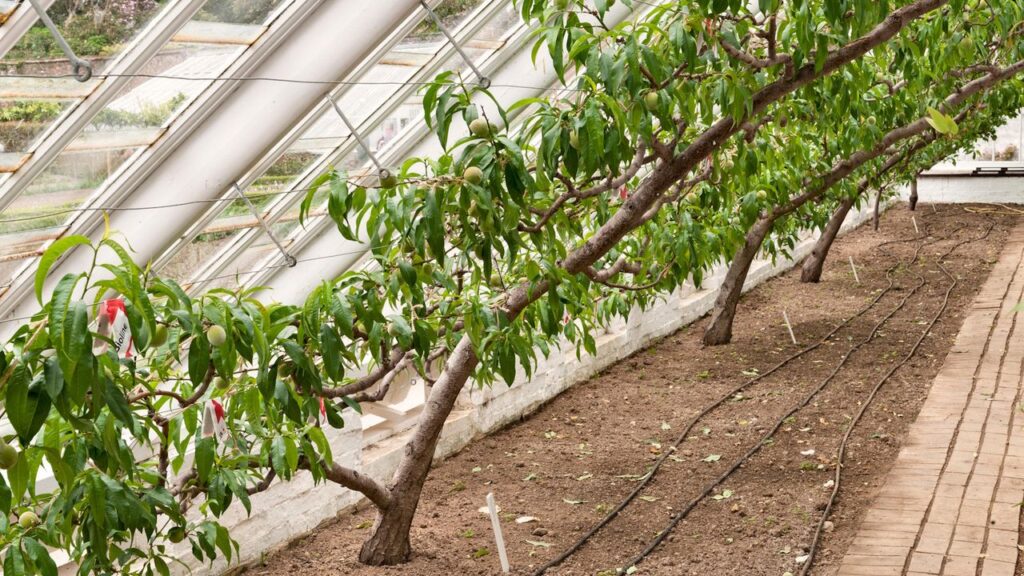
URGENT UPDATE: New reports confirm that a Victorian-era gardening technique is revolutionizing peach harvests in colder, wetter climates. Homegrown peaches, once thought impossible in these regions, are now achievable thanks to the use of a Victorian glasshouse, as showcased at Gravetye Manor in Sussex, England.
Head Gardener Tom Coward unveiled the secrets to their remarkable peach production, revealing that this traditional method prevents major issues like peach leaf curl, pest problems, and frost damage. The glasshouse, originally established by renowned horticulturist William Robinson in 1884, ensures that peach trees thrive despite the harsh elements typical of wet climates.
Peach trees are especially vulnerable in chillier areas, with conditions often leading to fungal diseases that compromise fruit quality. “By putting them under glass, you don’t get peach leaf curl,” Coward explained. This method allows Gravetye to produce high-quality fruit early in the season while safeguarding the blossoms from frost, which can devastate potential yields.
Inside the glasshouse, varieties like Amsden June and Red Haven flourish. Coward highlights their effectiveness: “The blossom also never gets frosted, which of course can stop a peach tree fruiting.” This age-old technique not only preserves the integrity of the fruit but also enhances flavor by allowing the peaches to ripen fully on the tree.
The glasshouse at Gravetye Manor underwent restoration in 2012 to maintain its historical significance and efficacy. During the Victorian era, glasshouses gained popularity due to advances in technology and accessibility of materials, allowing for a range of tropical plants to be cultivated. This trend continues at Gravetye, where the dedicated gardening team is committed to maintaining Robinson’s legacy.
For those interested in replicating this success at home, Coward suggests that even smaller spaces can accommodate compact peach trees in pots. It is crucial to use well-draining soil and ensure adequate ventilation in the greenhouse to minimize fungal risks. Techniques such as pruning and training the trees for better airflow can also significantly enhance fruit production.
As the peach harvest season approaches, this innovative approach offers hope for backyard gardeners in similar climates. Coward advises that ripe peaches will show signs of yellowing, a slight give when pressed, and a sweet aroma, indicating they are ready for picking.
This breakthrough not only boosts local agriculture but also ignites a renewed interest in Victorian gardening techniques, highlighting the potential for sustainable practices in modern horticulture. As home gardeners take note, the possibilities for fresh produce in challenging climates are expanding, making the dream of homegrown peaches a reality for many.
Stay tuned for additional insights and tips on maximizing your peach harvest as the season unfolds.






